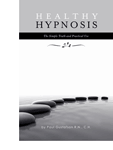Stress can be defined as any type of change that causes physical, emotional or psychological strain. However, not all types of stress are harmful or even negative. There are a few different types of stress that we encounter:
- Eustress, a type of stress that is fun and exciting, and keeps us vital (e.g. skiing down a slope or racing to meet a deadline)
- Acute Stress, a very short-term type of stress that can either be positive (eustress) or more distressing (what we normally think of when we think of ‘stress’); this is the type of stress we most often encounter in day-to-day life (e.g. skiing down said slope or dealing with road rage)
- Episodic Acute Stress, where acute stress seems to run rampant and be a way of life, creating a life of relative chaos (e.g. the type of stress that coined the terms ‘drama queen’ and ‘absent-minded professor’)
- Chronic Stress, the type of stress that seems never-ending and inescapable, like the stress of a bad marriage or an extremely taxing job (this type of stress can lead to burnout)
The Fight or Flight Response
Stress can trigger the body’s response to perceived threat or danger, the Fight-or-Flight response. During this reaction, certain hormones like adrenalin and cortisol are released, speeding the heart rate, slowing digestion, shunting blood flow to major muscle groups, and changing various other autonomic nervous functions, giving the body a burst of energy and strength.
Originally named for its ability to enable us to physically fight or run away when faced with danger, it’s now activated in situations where neither response is appropriate, like in traffic or during a stressful day at work. When the perceived threat is gone, systems are designed to return to normal function via the relaxation response, but in our times of chronic stress, this often doesn’t happen enough, causing damage to the body.
Stress and Health: Implications of Chronic Stress
When faced with chronic stress and an overactivated autonomic nervous system, people begin to see physical symptoms. The first symptoms are relatively mild, like chronic headaches and increased susceptibility to colds. With more exposure to chronic stress, however, more serious health problems may develop. These stress-influenced conditions include, but are not limited to:
- depression
- diabetes
- hair loss
- heart disease
- hyperthyroidism
- obesity
- obsessive-compulsive or anxiety disorder
- sexual dysfunction
- tooth and gum disease
- ulcers
- cancer
In fact, most it’s been estimated that as many as 90% of doctor’s visits are for symptoms that are at least partially stress-related.
What You Can Do
To keep stress, especially chronic stress, from damaging your health, it’s important to be sure that your body does not experience excessive states of this physiological arousal. There are two important ways to do this:
- Learn Tension-Taming Techniques: Certain techniques can activate your body’s relaxation response, putting your body in a calm state. These techniques, including meditation, yoga, deep breathing exercises, journaling and positive imagery, can be learned easily and practiced when you’re under stress, helping you feel better relatively quickly.
- Prevent Excess Stress: Some acute stress is unavoidable, but much of the episodic acute stress and chronic stress–the stress that damages our health–that we experience can be avoided or minimized with the use of organization techniques, time management, relationship skills and other healthy lifestyle choices.
Seeking Professional Help
Sometimes stress becomes so great that people develop stress-related disorders or need the help of medications, herbal treatments or the aid of a professional. If you experience excessive anxiety or symptoms of depression, find yourself engaging in unhealthy or compulsive behaviors, or have a general feeling that you need help, talk to your doctor or a health care professional. There is help available, and you can be feeling better and more in control of your life soon.
Whatever your situation, stress need not damage your health. If you handle your stress now, you can quickly be on the road to a healthier, happier life.
By Elizabeth Scott, M.S.
Chronic stress has powerful effects on the body’s production and storage of fat. High levels of cortisol induced by stress can lead to increase in body fat and obesity. This adds to all the other ways that stress promotes obesity.
There are various ways stress can lead to increase in body fat and obesity. Most people are aware of behavioral and emotional aspects of stress-related obesity. People who are often stressed out have trouble maintaining a healthy lifestyle.
They may eat often even when they’re not hungry — this is called stress eating or emotional eating — or they may eat high-calorie fast foods because they don’t have time to prepare something healthy. Additionally, they may be too exhausted to exercise regularly when they’re under a lot of stress.
Physiological factors — specifically, cortisol and cortisol-induced insulin — are the main reasons why stress can lead to increase in body fat and obesity. When faced with a stressful situation, the body triggers the stress response or fight-or-flight response. This leads to the secretion of cortisol, adrenaline and other stress hormones along with an increase of blood pressure, breathing and heart rate.
The normal stress response causes the rapid increase of heart rate and respiratory rate as well as blood pressure. Available energy is increased while digestion and other non-essential processes are decreased. So, the body is primed to fight or take flight and escape, whichever is needed.
The natural stress response is usually short-term and self-regulating. When the threat is gone, the body returns to normal. As cortisol and adrenaline levels drop, heart rate, respiratory rate and blood pressure as well as energy levels return to their baseline levels. Other systems inhibited by the stress response return to their regular activities.
The natural stress response goes awry when stress is constant and excessive. In today’s society, most people are inundated with overwhelming stress. For those constantly dealing with excessive and chronic stress, the body’s fight-or-flight response is constantly on. In turn, the resulting stress hormones released are chronically high.
Chronically high levels of cortisol plays a big role in the development of obesity.
- Cortisol helps the body handle stress; so, when stress goes up, cortisol also goes up. Cortisol stimulates fat and carbohydrate metabolism during stressful situations. This leads to increased blood sugar levels required for fast energy. In turn, this stimulates insulin release which can lead to an increase in appetite.
- Adrenaline increases alertness and metabolism by helping fat cells release energy.
When the immediate stress is over, the adrenaline levels return to normal. But, cortisol lingers to help bring the body back into balance after stress. One of the ways it gets things back to balance is by increasing appetite to replace the carbohydrate and fat used for the flight or fight response.
The problem is that in today’s society, stress-causing situations — such as, traffic jams or computer malfunctions — do not really require the body to use up a lot of energy. So, cortisol ends up causing the body to refuel after stress even when it doesn’t really need to refuel. This excess fuel or glucose is converted into fat resulting in increased storage of fat.
What makes matters worse is that cortisol-induced high levels of insulin also leads to increased production and storage of fat. So, exposure to chronically high levels of cortisol and cortisol-induced insulin are the main reasons why stress can lead to increase in body fat and obesity.
By: Allie Mendoza
Nutrition scientists have been closely following the health modifying and life extension benefits of calorie restriction (CR) for decades, as reducing caloric intake by 25 to 40 percent each day is shown to dramatically improve quality of life and add years to lifespan in virtually every animal and mammal species.
Not only is CR an important element to control overweight and obesity, but the practice is also shown to positively influence the expression of longevity genes known as SIRT, an evolved method of ensuring reproductive abilities among species.
Publishing in the journal Aging Cell, researchers from the Washington University School of Medicine in St. Louis have shown that people who restrict their caloric intake in an effort to live longer have hearts that function more like those in people who are 20 years younger.
As heart disease is the leading cause of death in western cultures, this is a finding of critical importance. Would you be willing to cut calories by 400 to 600 each day to dramatically lower your risk of dying from heart disease or a heart attack?
People consuming a high-calorie diet typically follow a very predictive curve where the heart’s ability to adapt to physical activity, stress, sleep and other factors that influence the rate at which the heart pumps blood slowly declines, ultimately leading to heart failure and cardiovascular disease.
People who have significantly restricted their caloric intake for an average of seven years do not exhibit the same rate of decline and maintain heart function similar to those twenty years younger.
Researchers studied 22 CR participants by connecting them to portable heart monitors and comparing them to a second group that did not follow a CR regimen. With an average age just over 51, the CR group ate nutritionally-optimized healthy diets but consumed 30 percent fewer calories than normal.
The study team found heart rates were significantly lower in the CR group, while their heart rate variability was significantly higher. The findings were consistent with a group aged in their early thirties.
Lead study author, Dr. Luigi Fontana, noted “We looked at normal levels of heart rate variability among people at different ages, and we found that those who practice CR have hearts that look and function like they are years younger.” Dr. Fontana concluded “heart rate variability is better in people who practice CR and that means more than just their cardiovascular systems are flexible… the better ratio suggests improved health in general.”
To practice calorie restriction, begin by cutting 10 to 15 percent of calories daily, and slowly work to reduce calorie intake by as much as 25 percent to optimize heart health and extend natural lifespan.
more about what is referred to as the global industrial diet, how the media and corporate economic interests dictate how food is manufactured and how our healthy wellbeing is not a priority.
This animated 1998 Saturday Night Live video, created by Robert Smigel, was aired only once before being banned because of its scathing critique of corporate media ownership, including NBC’s ownership by General Electric/Westinghouse.
By: John Phillip
I see many individuals who are paralyzed with irrational fear over day-to-day activities like riding an escalator, flying, driving, speaking, or even making direct eye contact with others. Some know when and how the fear originated but most don’t have a clue. With hypnosis we really don’t even need to know.
It is very frustrating for these individuals because intellectually they know how ridiculous their response is and how it defies logic but they feel powerless to change. What makes it even worse is that over time, with repetition, the roots of the problem grow long and strong, making it nearly impossible to establish lasting relief.
I recently sat with a client terrified of heights, any height at all. She got nervous just climbing a flight of stairs and would refuse to even try unless there was a railing on both sides. The problem was significantly affecting the quality her life.
Hypnosis offered a unique way to ‘pretend’ she didn’t have the fear, to imagine what it would be like. The advantage to doing this while in hypnosis is that the subconscious doesn’t know the difference between what we think about and what we experience in real life. So we were able to insert new preferred ground rules with how she viewed height. Then she listened to the program at home for a couple of weeks…problem solved.
By: Paul Gustafson RN CH
1. Eggs Each egg has 6 grams of protein but just 72 calories. No wonder researchers at Pennington Biomedical Research Center in Baton Rouge, Louisiana, found that eating eggs for breakfast (as part of a low-cal diet) helps you slim down.
2. Tomato sauce It’s loaded with lycopene, which makes your skin look younger and keeps your heart healthy. In fact, a Harvard study found that women with the most lycopene in their blood reduced their risk of a heart attack by 34%.
3. Dried plums(prunes) They’re packed with polyphenols, plant chemicals that have been shown to boost bone density by stimulating your bone-building cells.
4. Walnuts Just 14 walnut halves provide more than twice your daily dose of alpha-linolenic acid, an omega-3 fat that’s been shown to improve memory and coordination.
5. Brussels sprouts They have more glucosinolates (compounds that combat cancer and detoxify our bodies) than any other vegetable. For a side dish that will make you wonder why you’ve been avoiding them, slice each one into quarters, then sauté in olive oil with chopped sweet Vidalia onions.
6. Acai juice A glass or two of this anthocyanin-rich berry juice can dramatically boost the amount of antioxidants in your blood, say Texas A&M University researchers.
7. Apples They contain quercetin, an antioxidant that may reduce your risk of lung cancer.
8. Bok choy This calcium-rich veggie can protect your bones and may even ward off PMS symptoms.
9. Steel-cut oats Because they’re less processed than traditional oats, they’re digested more slowly—keeping you full all morning long.
10. Salmon You’ll get all the heart-smart omega-3s you need in a day from just 3 oz.
11. Avocados Their healthy fat keeps you satisfied and helps you absorb other nutrients. For a new u twist, brush a halved avocado (pit removed) with olive oil and grill 1 minute. Serve with red onion, sliced grapefruit and balsamic vinegar.
12. Spinach A half-cup provides more than five times your daily dose of vitamin K, which helps blood clot and builds strong bones.
13. Canned pumpkin It’s filled with natural cancer fighters alpha- and beta-carotene.
14. Cauliflower White foods can be good for you! This one is packed with cancer-fighting glucosinolates.
15. Scallops A 3-oz serving has 14 grams of protein but just 75 calories.
16. Collard greens They’re exploding with nutrients like vitamin A, zeaxanthin and lutein, which keep your eyes healthy.
17. Olives They deliver the same heart-healthy monounsaturated fat you get in olive oil, but for just 7 calories per jumbo olive!
18. Brown rice It’s a top source of magnesium, a mineral your body uses for more than 300 chemical reactions (such as building bones and converting food to energy).
19. Oysters These keep your immune system strong. A 3-oz serving (about 6 oysters) dishes up a quarter of your daily iron, plus nearly twice the zinc and all the selenium you need in a day.
20. Edamame One cup has a whopping 22 grams of plant protein, as well as lots of fiber, folate and cholesterol-lowering phytosterols.
21. Strawberries They’re loaded with ellagitannins, phytochemicals that may halt the growth of cervical and colon cancers.
22. Lentils A great source of meat-free protein, a half-cup of cooked lentils also gives you nearly half your daily folate, a B vitamin that protects a woman’s unborn baby from neural tube defects.
23. Bran flakes Their whole grains keep your heart in tip-top shape by reducing inflammation and melting away belly fat.
24. Kiwi Italian researchers found that it reduces asthma-related wheezing, thanks to its high vitamin C content (one kiwi has 110% of your daily requirement).
25. Black beans They’re loaded with protein, fiber, and flavonoids—antioxidants that help your arteries stay relaxed and pliable.
26. Sunflower seeds A quarter-cup delivers half your day’s vitamin E, which keeps your heart healthy and fights infection.
27. Sardines 3 oz provide more than 100% of your daily vitamin D. Sardines are also a top source of omega-3 fats. Try adding mashed canned sardines to marinara sauce and serving over whole-wheat pasta.
28. Asparagus A half-cup supplies 50% of your daily bone-building vitamin K and a third of your day’s folate, it’s a natural diuretic so it banishes bloating, too.
29. Bananas They’re loaded with several kinds of good-for-you fiber, including resistant starch (which helps you slim down).
30. Broccoli sprouts They have 10 times more of the cancer-preventing compound glucoraphanin than regular broccoli.
31. Fat-free milk With a third of the calcium and half the vitamin D you need in a day, plus 8 grams u of muscle-building protein, it’s the ultimate energy drink.
32. Baked potatoes Each one packs a megadose of blood-pressure–lowering potassium—even more than a banana.
33. Sweet potatoes Half of a large baked sweet potato delivers more than 450% of your daily dose of vitamin A, which protects your vision and your immune system.
34. Flaxseed Not only is flaxseed loaded with plant omega-3s, it also has more lignans (compounds that may prevent endometrial and ovarian cancer) than any other food. Store ground flaxseed in your refrigerator and sprinkle on yogurt, cold cereal or oatmeal.
35. Greek yogurt It has twice the protein of regular yogurt.
36. Dried tart cherries Researchers at Michigan State University found their potent anthocyanins help control blood sugar, reduce insulin and lower cholesterol.
37. Wheat germ A quarter-cup gives you more than 40% of your daily vitamin E and immune-boosting selenium.
38. Whole-wheat english muffins You get 4 ½ grams of fiber for only 134 calories.
39. Tea Both green and black tea prevent hardening of the arteries, according to researchers at the University of Scranton.
40. Peanut butter This smart spread has arginine, an amino acid that helps keep blood vessels healthy.
41. Blackberries The king of the berry family boasts more antioxidants than strawberries, cranberries or blueberries.
42. Mustard greens These “greens” (actually a cruciferous veggie) are a top source of vitamin K. For a tasty pesto, chop them in a food processor with garlic, walnuts, Parmesan and olive oil.
43. Grapes They’re a leading source of resveratrol, the plant chemical responsible for the heart-healthy benefits of red wine.
44. Soy milk A good source of vegetable protein, calcium-enriched soy milk has as much calcium and vitamin D as cow’s milk.
45. Brazil nuts They have more selenium than any other food. One nut delivers your entire day’s worth!
46. Canola oil A Tbsp of this heart-healthy oil has all the alpha-linolenic acid you need in a day, plus two different forms of vitamin E.
47. Blueberries They improve memory by protecting your brain from inflammation and boosting communication between brain cells.
48. Oranges One orange supplies more than 100% of the vitamin C you need in a day. It’s also a good source of calcium and folate.
49. Watercress With just 4 calories per cup, this cruciferous veggie delivers a hefty dose of vitamin K, zeaxanthin, lutein, beta-carotene and cancer-fighting phytochemicals.
50. Turkey breast It has 20 grams of satisfying protein but just 90 calories per 3-oz serving.
51. Barley A top source of beta-glucan, a fiber that lowers cholesterol and helps control blood sugar.
52. Shiitake mushrooms One serving (about ¼ lb) provides as much vitamin D as you’d get from a glass of milk.








